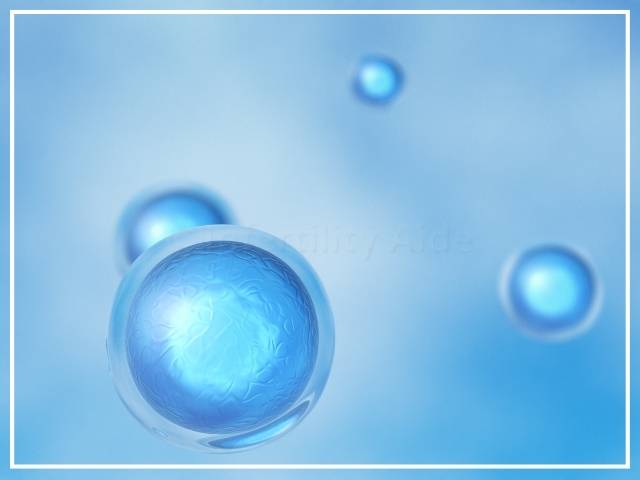Female babies are born with all the eggs they are ever going to have and the numbers decline rapidly at different stages of life (1). So, how many eggs do women have and what happens to them as they age? We ask:
As a 20-week-old baby inside your mother’s womb, you have 6-8 million eggs and that is the most you will ever have.
However, only around 300-400 of these eggs will be good for use during your lifetime.
Women in their 30s or inching closer to 40s often ask “how many eggs do I have?” as they consider egg freezing.
Unfortunately, there’s no fixed answer to that but you can get an estimate noting the general trends among women and then get some tests done to understand your specific situation.

How many eggs do you have at birth?
As a fetus in your mother’s womb, your ovaries hold around 6-8 million eggs but they start to disintegrate quickly, dropping to around 1-2 million at the time of birth.
How many eggs does a woman have at puberty?
The numbers continue to decline every month as you grow and by the time you hit puberty, you have only 300,000 – 400,000 eggs in your ovaries.
Still a lot, considering every baby is made from one good egg and one sperm cell, but no one considers motherhood as soon as they start getting their periods.
How many eggs does a woman have at 20?
You lose over a thousand eggs each month but the quantity and quality of the eggs in your 20s is adequate. Most women will have over 150,000 eggs even in their late 20s. This is obviously the best time for conception.
How many eggs does a woman have at 30?
By the time they reach 30 years of age, 95% of women only have 12% of their fertility remaining but that’s nothing to worry about as it still means around 120,000 eggs.
Although it varies from woman to woman, a report by the American College of Obstetricians and Gynecologists suggests that female fertility officially starts to diminish at the age of 32, and after 37 years, it declines rapidly.
How many eggs does a woman have at 40?
At 37-38 years, even healthy women will have around 25,000 of their eggs (2) but by then the quality of these eggs also becomes a concern.
Even if they are able to conceive, there are higher chances of genetic abnormalities in the embryos of women close to 40 years and PGT is recommended for screening the embryos before transferring them to the uterus.

How many eggs does a woman have at 50?
By the age of 50, you may still have around 1,000 eggs in your ovaries but they may not be healthy enough to start a pregnancy. Most women hit menopause between the ages of 45 and 55 years and that’s when the reproductive activity completely shuts down (3).
How many eggs does a woman release each month?
A healthy woman, during her reproductive years, will release one mature egg very month. It remains in your system for around 24 hours after being released and if it is met by sperm in this duration, a pregnancy may result.
Occasionally more than one egg is released which may turn into a multiple pregnancy.
However, you also lose around 1,000 eggs in the process of ovulating that one egg per month. Every day around 30-40 eggs start to mature and at a given time anywhere between 500 and 1,000 eggs are undergoing maturation.
An egg takes around 90 days to complete the full cycle to maturation and that’s why when you’re trying to improve egg quality for pregnancy, you need to practice a healthier lifestyle for around 3 months.
So, only the eggs that start their maturation process in that specific small window of around 90 days before the actual ovulation may be useful for that cycle, while others will be wasted as over-ripe or not-cooked enough. Then out of this batch of eggs (30-40), only one that is most sensitive to FSH will finally be the egg of the month.
During IVF, since FSH is administered externally, multiple eggs are simultaneously matured and become available for fertilization.
How can I measure my egg count?
There are 2 tests that can provide valuable insight about your ovarian reserve:
AMH test: Anti-Mullerian Hormone or AMH test is commonly done to check a woman’s ovarian reserve. It can be done by taking a small amount of blood. Read more about the AMH test.
Antral follicle count: The doctor uses an ultrasound to count the follicles visible in your ovaries during the early phase of your menstrual cycle.
The number of eggs with age are not fixed for every woman; there are variations because of race, genetics, diet, stress, exposure to environmental factors, etc.
Remember, you only need one good quality egg to make a healthy baby. Generally, the egg quantity and quality in women begins to decline after the mid-30s. To preserve your fertility potential into later years, you can consider egg freezing around that age or undertake the advised tests to see if you can hold out for a longer time.
The number of eggs that women have is not consistent but we know how many eggs does a woman need? — as many as the number of children she wants.
References
- Wallace, W. H., & Kelsey, T. W. (2010). Human ovarian reserve from conception to the menopause. PloS one, 5(1), e8772. https://doi.org/10.1371/journal.pone.0008772
- D. Nikolaou, A. Templeton, Early ovarian ageing: a hypothesis: Detection and clinical relevance, Human Reproduction, Volume 18, Issue 6, 1 June 2003, Pages 1137–1139, https://doi.org/10.1093/humrep/deg245
- Faddy, M.J. & Gosden, R.G. & Gougeon, Alain & Richardson, Sandra & Nelson, James. (1992). Accelerated disappearance of ovarian follicles in mid-life: Implications for forecasting menopause. Human reproduction (Oxford, England). 7. 1342-6. 10.1093/oxfordjournals.humrep.a137570.
Medically Reviewd by: Dr. Meenakshi, PhD